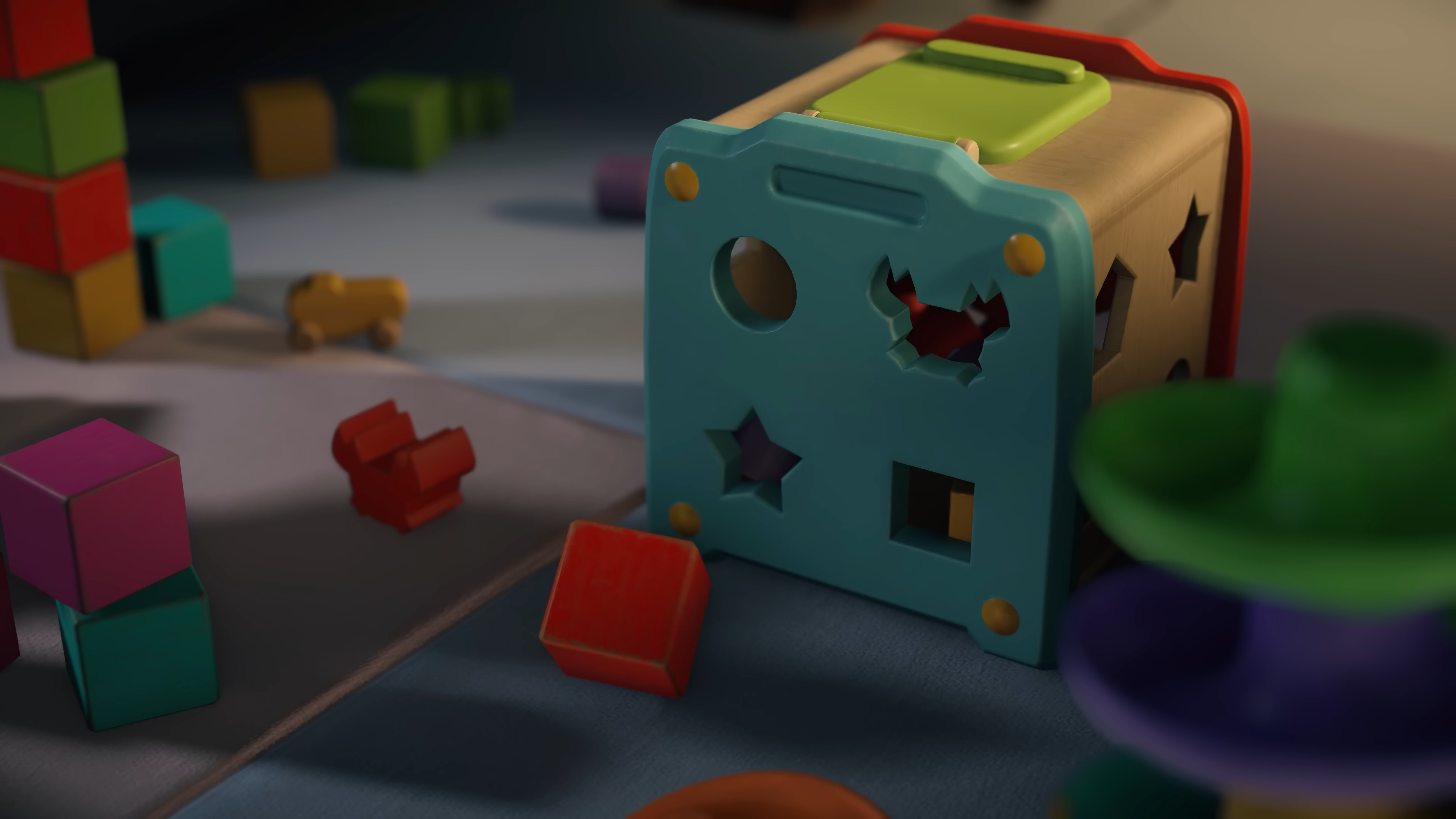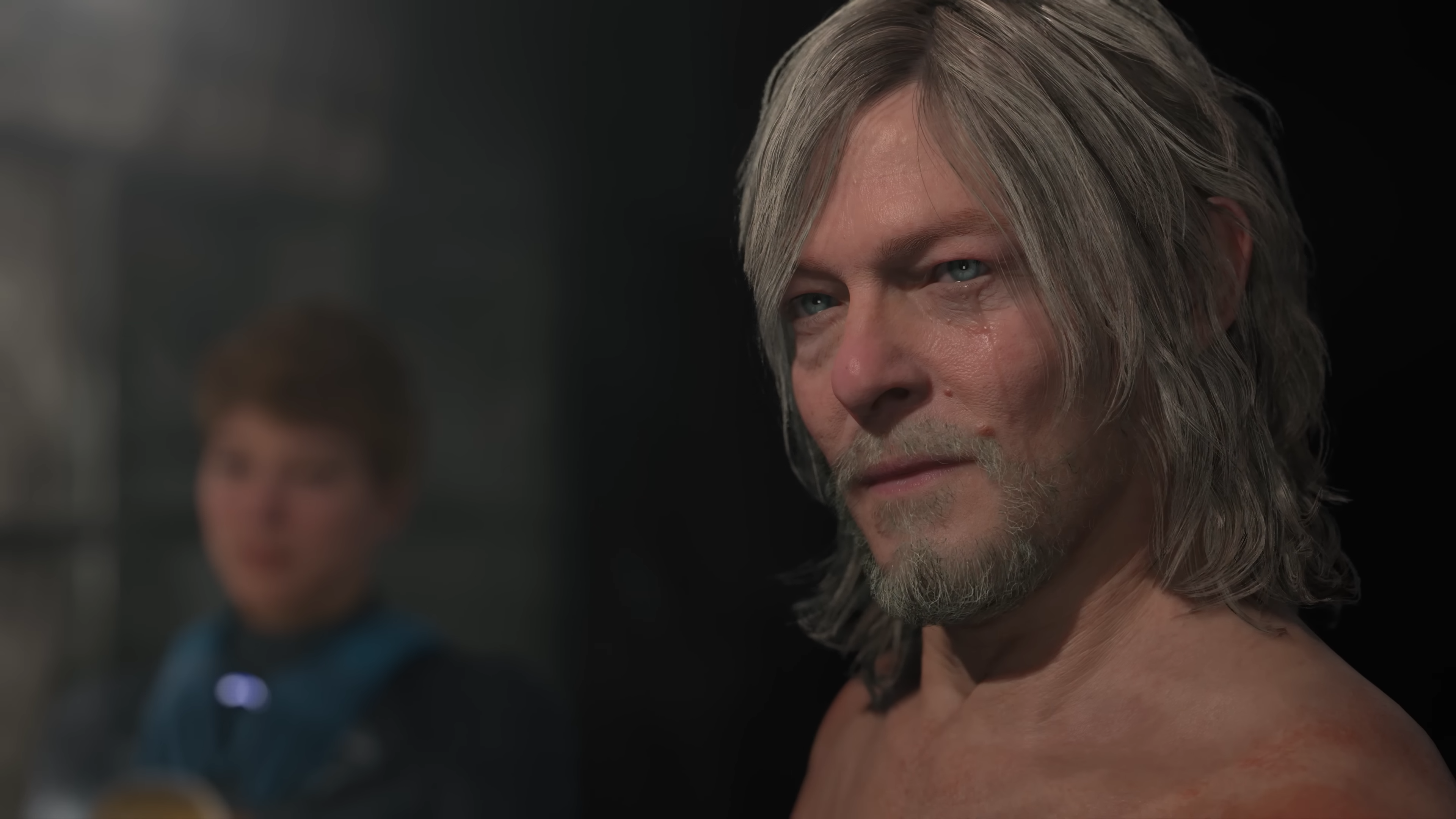Death Stranding 2 is mirroring Metal Gear Solid 2, and going La-li-lu-le-lo
The next generation has always been one of Kojima's big themes, but now it comes with added parenting vibes.

An end-of-year highlight for me was that, following months of teases that eventually just got a bit annoying, Hideo Kojima and Kojima Productions gave us the first real glimpse of Death Stranding 2, officially referred to for now as DS2. We've known the sequel was on the way ever since actor Norman Reedus, who plays the first game's protagonist Sam, blurted out its existence in an interview but, even so, this showed once more that Kojima and his team are in a class of their own when it comes to the art of the reveal.
These four minutes establish a new world in the aftermath of the first game's events, as well as mirroring one of the defining moments in Hideo Kojjima's career as a major director. Kojima's games had already met with native success, and indeed he'd already pioneered many of the ideas he'd later come to re-use, before Metal Gear Solid's global success gave his team a new opportunity and problem: a huge sequel budget, a generational leap, and the expectations that came with both.
This is not the place to re-litigate Metal Gear Solid 2's many successes, other than to note that a key principle behind it was upsetting audience expectations: most infamously in the shift in protagonists, but also through things like making the US government the main antagonist. It mirrored elements of the game it was succeeding, and now over 20 years later we arrive at DS2, another big-budget sequel to a hit, and find echoes of MGS2 everywhere.
DS2's reveal shows us a world where apparently impossible things have happened. It is also a major shift in direction for the series that has a real world context. Death Stranding was released just before the pandemic and, after the years that followed, its themes of loneliness and isolation now hit with enormous power; it became a game defined as much by what unfolded around it as what it was.
The sequel has been created in this wake, and the trailer suggests that it is leaning into some of the aspects that, perhaps accidentally, have come to seem so defining. It opens with shots of childrens' toys, the kind of things a toddler plays with, and a look at a height-measuring chart with small BT handprints marking growth. This is overlaid by guitar strumming and the singing of Troy Baker, antagonist Higgs from Death Stranding.
Kojima's first big twist is that Lou, your BB from the original game, appears to have grown up: which should not have happened, except the ending of the first game saw something else impossible happen with Lou. There's no cast-iron way of telling if this toddler is the baby you carried with you over an American wasteland, of course, but the details in the scene are suggesting so: we see the BB container, now repurposed as a kind of toy aquarium, then that Fragile is looking after her.
A scene that in its composition explicitly mirrors this special edition box art, which shows the characters Olga and Sunny, and is making explicit the game's theme of what we choose to pass on.
Keep up to date with the most important stories and the best deals, as picked by the PC Gamer team.
Here is the Gackt cover to MGS2 that is real. pic.twitter.com/gfuhwl9beEJanuary 7, 2015
Fragile was a key ally in Death Stranding, a companion throughout the journey who helps Sam avert the "last stranding" at the game's climax, and at the end joins Bridges (the organisation Sam has been helping to rebuild America). Here she is raising the girl in apparent isolation when an armed group rushes the compound, forcing her to flee on a remarkable looking one-wheeled bike… then comes the next twist.
In trailers like these, heroic stuff happens. There's a jump cut before any scares or big reveals. As you're expecting Fragile and Lou to zoom off into the distance, the gunfire starts. Fragile is clipped, crashes, and falls, protecting the child through the tumble. They end up metres away from each other on the ground at which point someone, and it may well be Higgs, aims his weapon. There's a gunshot and the suggestion is that he shoots either Fragile or the child.
This feels like a Kojima fakeout, and may even seem familiar. Over the first game we learn why Fragile and Higgs are mortal enemies before, in a climactic scene, the game suggests she shoots him on the beach. We later find out she left Higgs alive, with the choice of being permanently stranded or ending it himself. Gee, what a surprise he's back.
And as the DS2 trailer goes on to show, both Fragile and Lou are very much alive. We next see Fragile looking slightly older, with her skin apparently healed of the withering timefall effect, next to a white-haired Sam. This suggests a considerable shift in timeline, something the Metal Gear Solid series would do with every major entry, and more importantly we see Lou's BB pod with something manifesting in it: an angel baby, a trapped BT, or a tentacle horror, at different points.
It's here we start to get some super-explicit echoes of MGS2, first with the giant tar-traversing mech that emerges. Death Stranding had some Metal Gear elements to its world design, and the Director's Cut added considerably more, but this is explicitly a giant Yoji Hinkawa-designed mech. Not just that but it's an amphibious mech, the big selling point of MGS2's Metal Gear Ray, and at one point we see its name: OHV Magellan.
The 16th-century explorer Ferdinand Magellan's achievements include the Magellan expedition, the first recorded circumnavigation of the world. The strait of Magellan, the most important natural passage between the Atlantic and Pacific oceans, is named after him. All of which suggests that, in the context of Death Stranding, we are here looking at an ocean-going vessel that can somehow navigate this world's beaches.
The water is a massive part of Death Stranding's scenery, both in the real and beach worlds, but in the latter case the game is sparing about putting you in it outside of cutscenes. This is complete scuttlebutt but feels worth mentioning: one of the most persistent early rumours about DS2 was the codename Ocean.
Which doesn't necessarily mean anything, though other imagery from the trailer suggests some sort of drought (the cult followers in a desert) as well as a tar ocean. Much of Death Stranding's narrative rests around the macguffin of how the beach, the ghostly otherworld, bleeds through into the 'real' world and when and how that can be deliberately or accidentally triggered. The long and short is that there are rules, but as Death Stranding suggests, these sometimes exist to be broken.
And so we come to the trailer's climax and perhaps the biggest MGS2 nod yet. That game included the relatively early, and rather ludicrous, reveal that the first game's dead antagonist Liquid Snake had apparently fused with and taken over Revolver Ocelot thanks to an arm graft. Don't ask.
The trailer closes with what looks like something similar: a fusion of the beach-bound Amelie and the beach-stranded Higgs, with a bit of Guitar Hero added in for good measure. This character resembles Higgs but has elements of Amelie's design added, not least a hairstyle intended to draw the comparison. Their robotic followers, meanwhile, unmistakably flash a red '!' symbol that's barely different enough from the iconic Metal Gear symbol to avoid the lawyers.
Finally the tagline: "Should we have connected?" Another flip. Death Stranding's equivalent phrase was "Tomorrow is in your hands", a phrase of encouragement that also has an element of hope, in-keeping with the game's theme of re-connecting America via the chiral network. The sequel's first instinct is to question such connection (arguably another echo of MGS2's big themes) even as its core revolves around others: Is the internet really a force for good in our societies?
But the biggest clue about where we're going here is a Higgs voiceover that occurs near the end: "It wasn't UCA that made the final decision, it was APAC: a private corporation". The United Cities of America was that grand attempt at re-connection: the wording here suggests that, whatever we achieved in the first game, it may ultimately have served different ends.




Kojception
OK: here's some total headcanon. The whole disaster of Death Stranding was precipitated when BB was shot and killed, but then Amelie used some magic voodoo to heal and repatriate her back from "the other side": and a load of BTs flooded into reality alongside her. Now we've got an older Lou, even if exactly how old remains to be seen (some are convinced this is Elle Fanning's role, which would be quite a leap in age), who is alive somewhere whether it's reality or the beach, and is being kept from the good guys by the bad guys.
In such a setup, traversing the oceans to find the beach Lou's been stranded on would fit. It also seems clear that the red Higgs-like character has a pretty big cult following, with more of a sinister robot edge than anything seen in the original world.
Hideo Kojima is, at any time, a self-referential creator. But this is a lot different to the usual easter eggs. DS2 is chafing against being called Death Stranding 2 at the same time as it calls Kojima Productions' most famous sequel to mind. It is apparently giving fans what they want, most notably the return of Sam, while echoing a game whose pre-release hype was all misdirection.
This is a cyclical industry, especially beyond a certain scale. When you've made something successful, all that some will want is for you to make exactly the same thing again. It's a cycle in which Kojima has managed to have his cake and eat it, by making superficially similar games that are deeply different experiences. Funny thing about cycles, though, is here it comes again. If anything defines Hideo Kojima as a director of big-budget games, it is that desire to go beyond and upset expectations. And if there's one expectation DS2 will face after its prescient and unusual predecessor, it's that it will be more of the same.

Rich is a games journalist with 15 years' experience, beginning his career on Edge magazine before working for a wide range of outlets, including Ars Technica, Eurogamer, GamesRadar+, Gamespot, the Guardian, IGN, the New Statesman, Polygon, and Vice. He was the editor of Kotaku UK, the UK arm of Kotaku, for three years before joining PC Gamer. He is the author of a Brief History of Video Games, a full history of the medium, which the Midwest Book Review described as "[a] must-read for serious minded game historians and curious video game connoisseurs alike."

